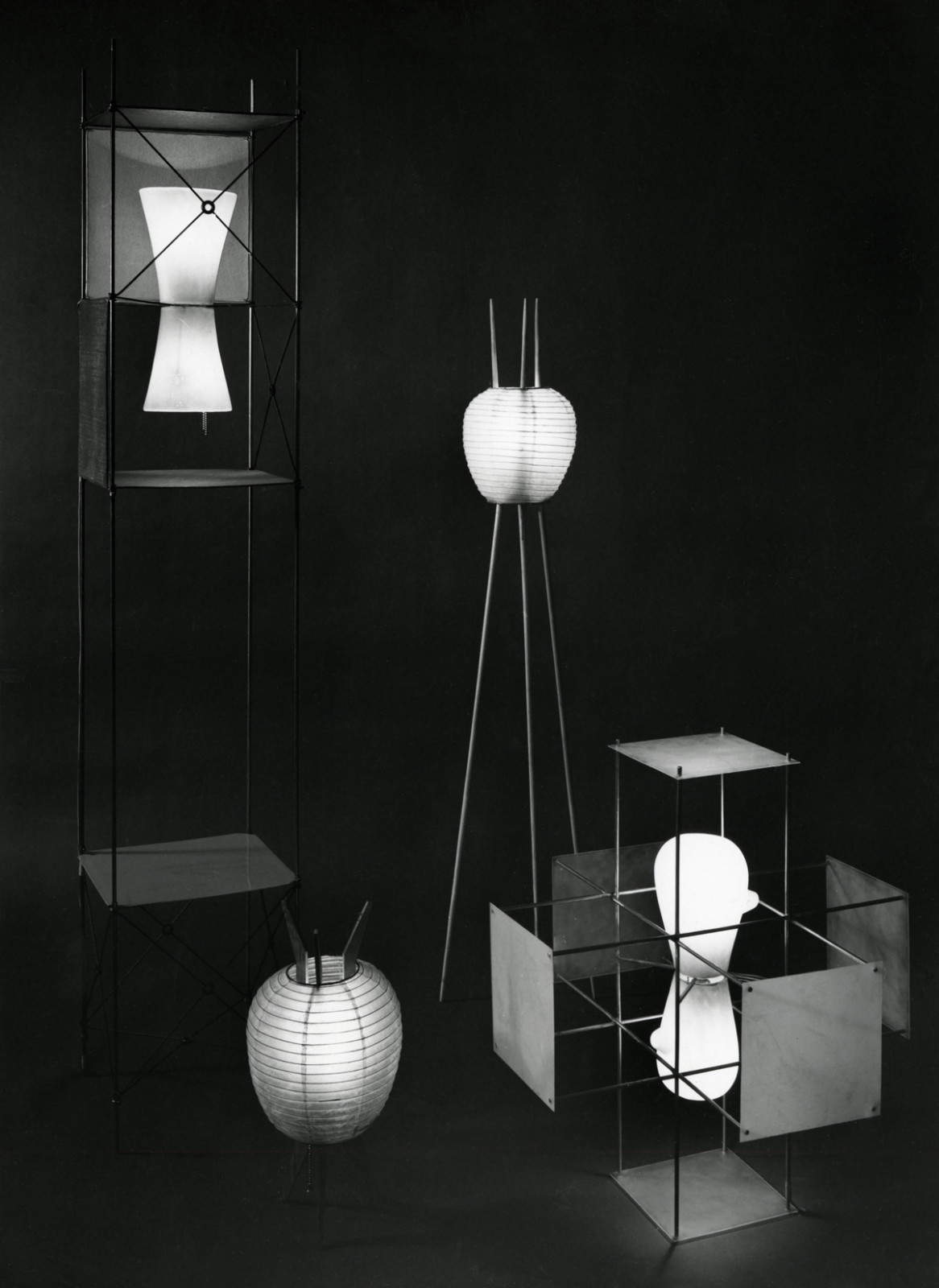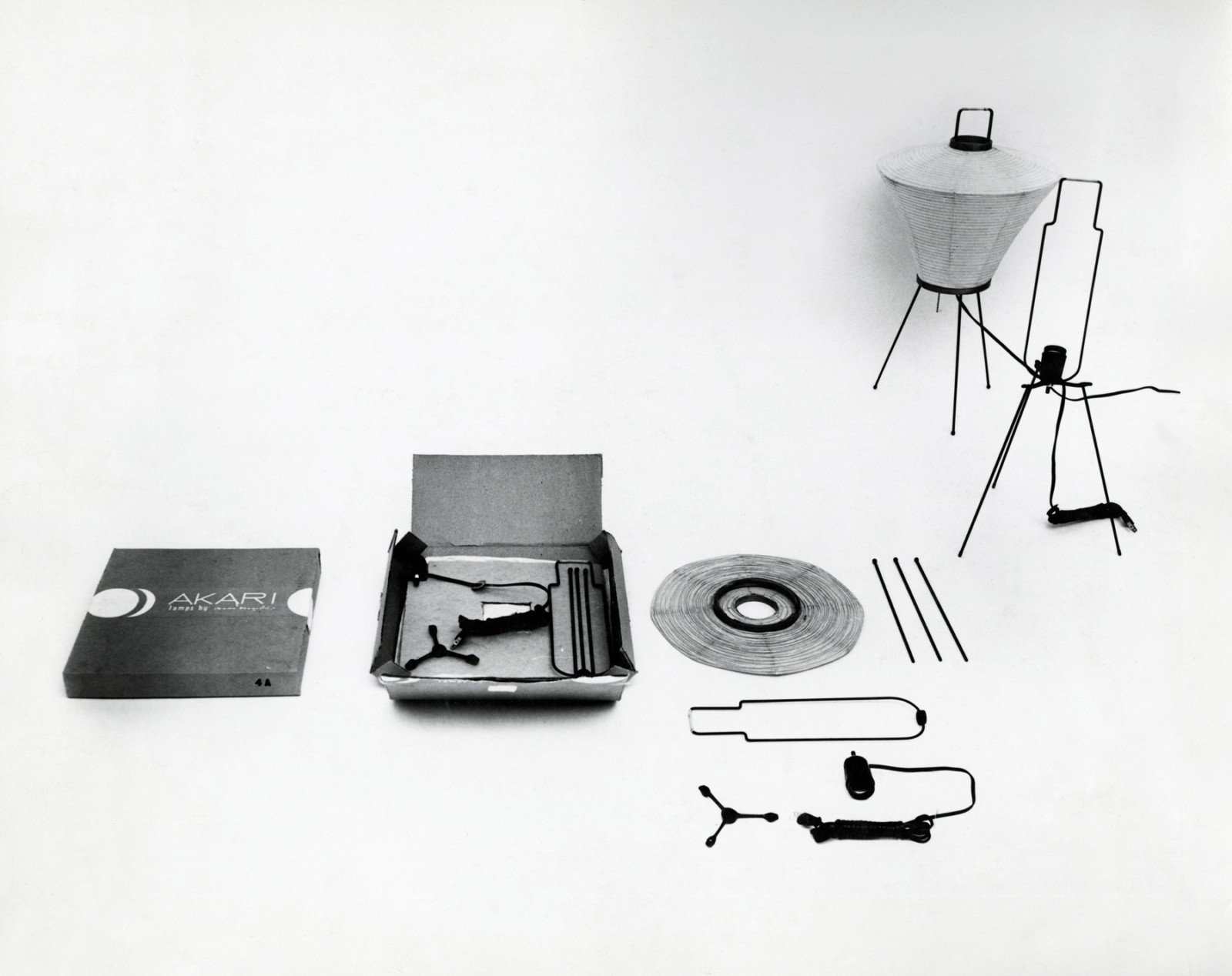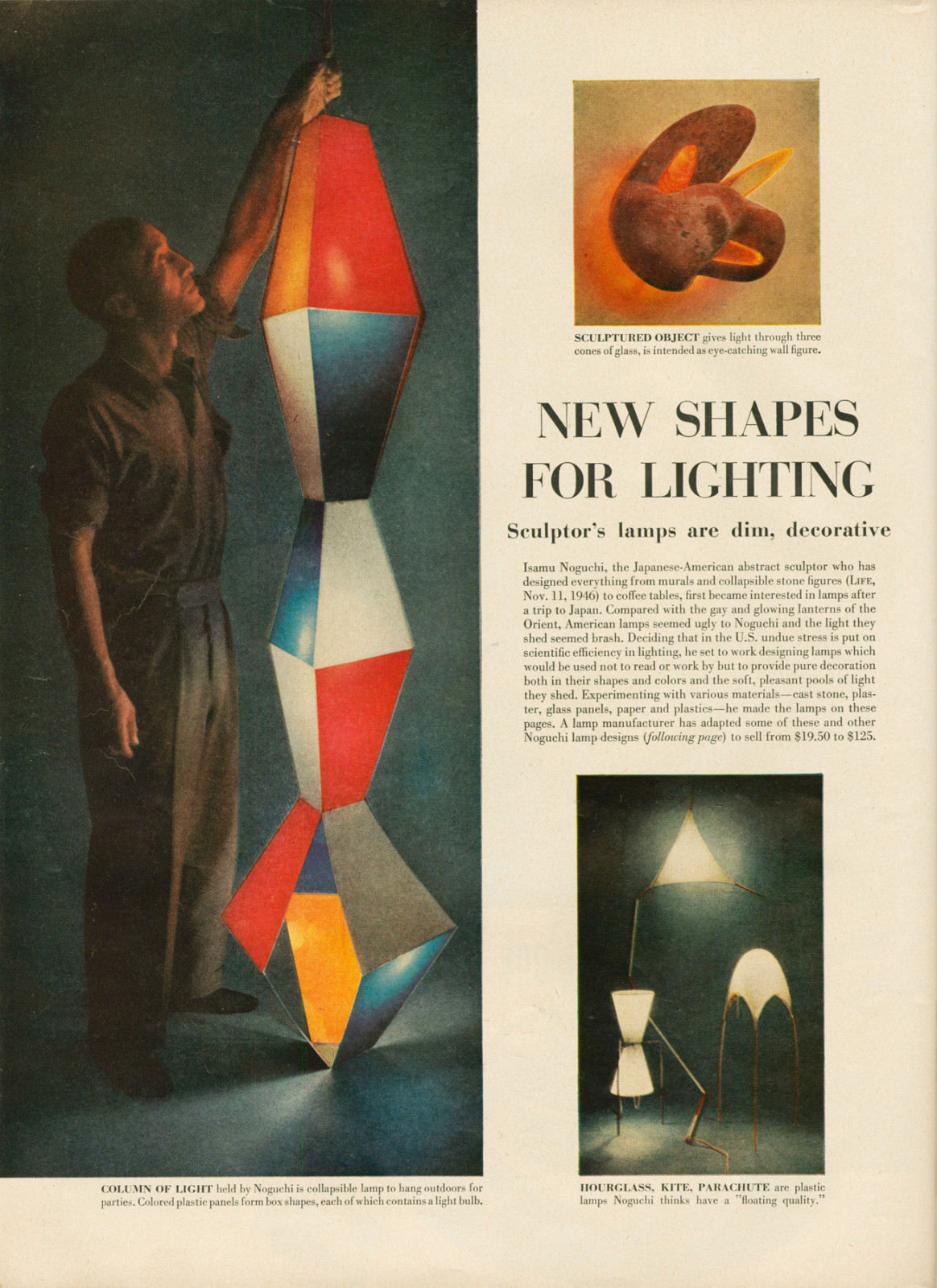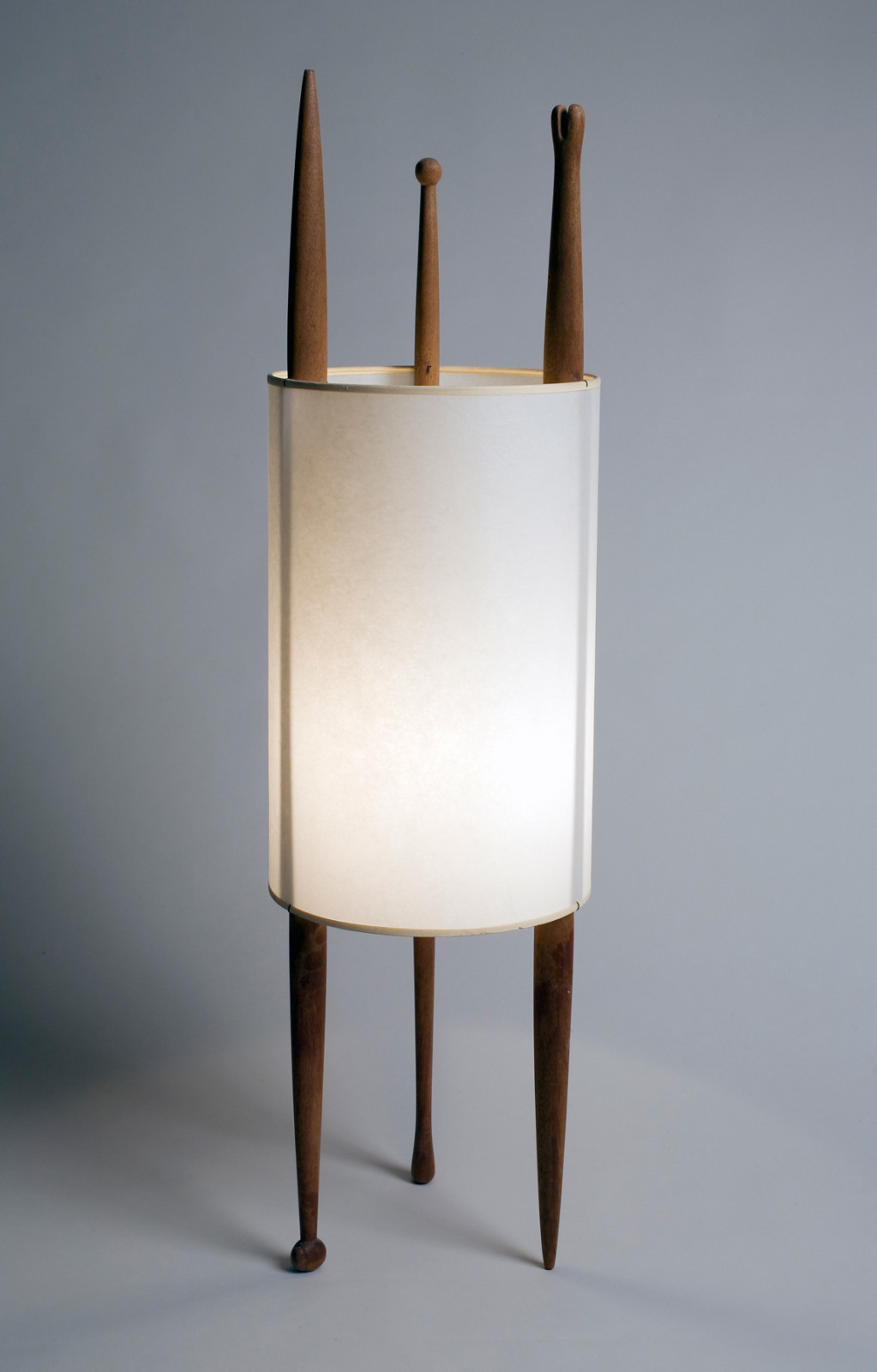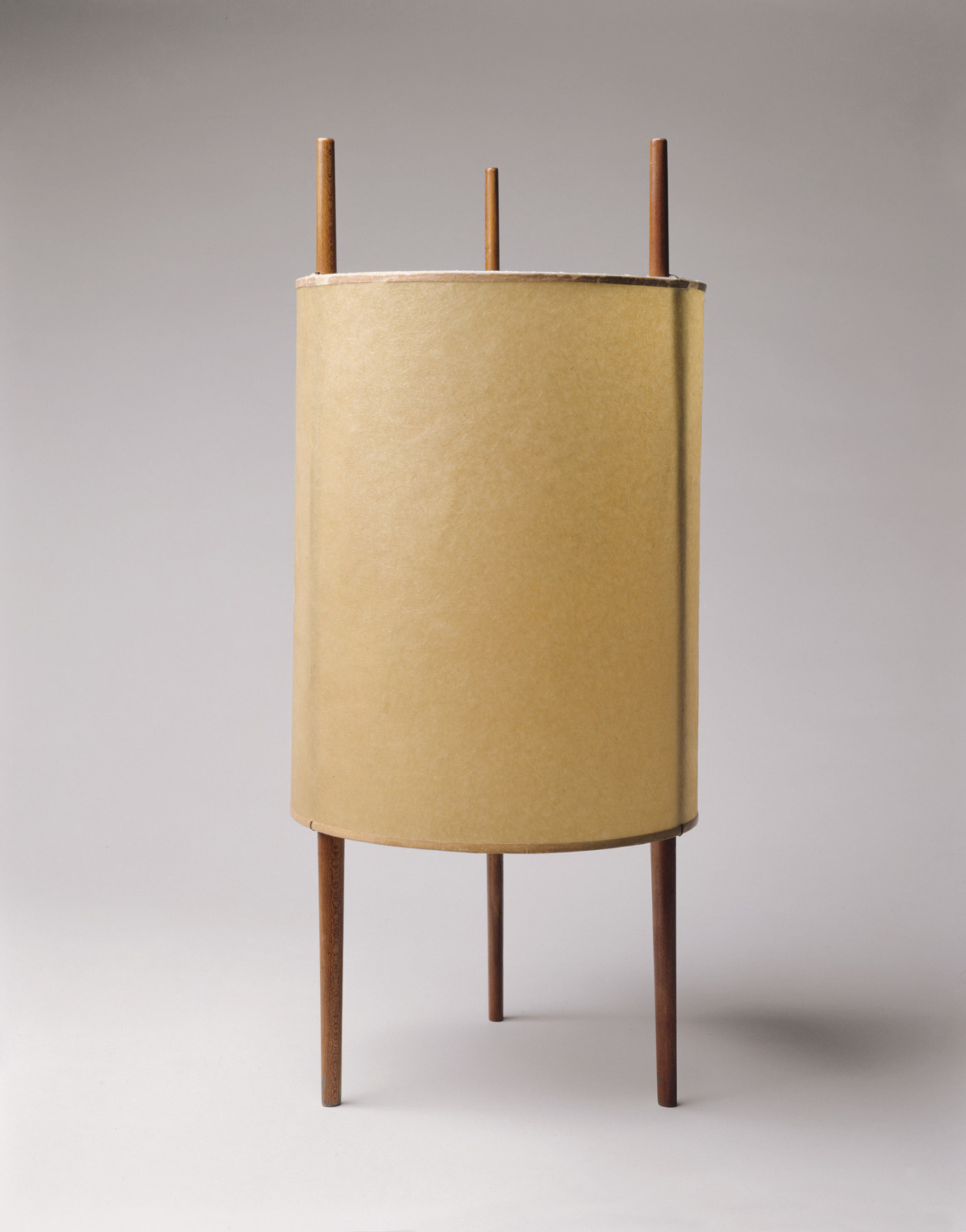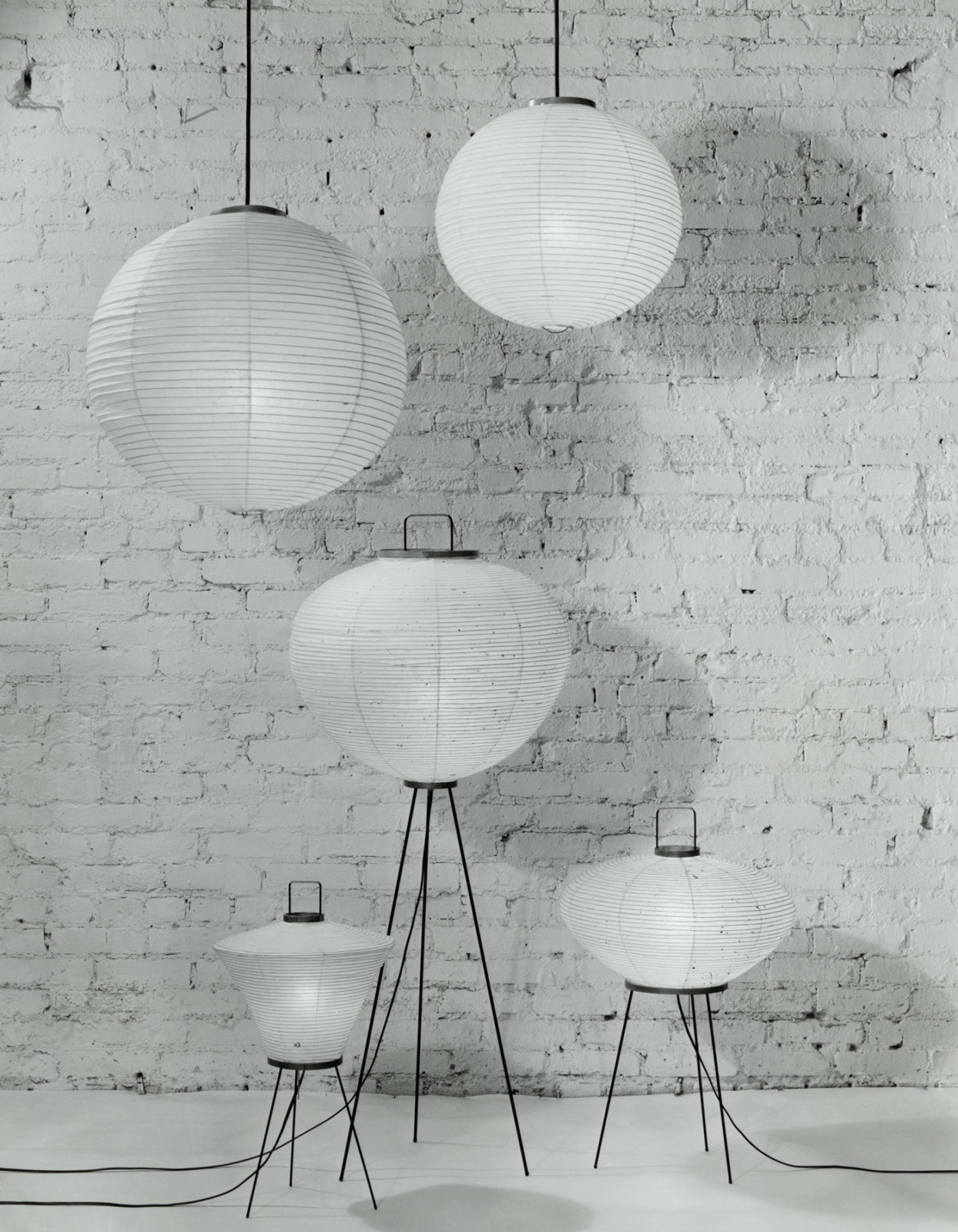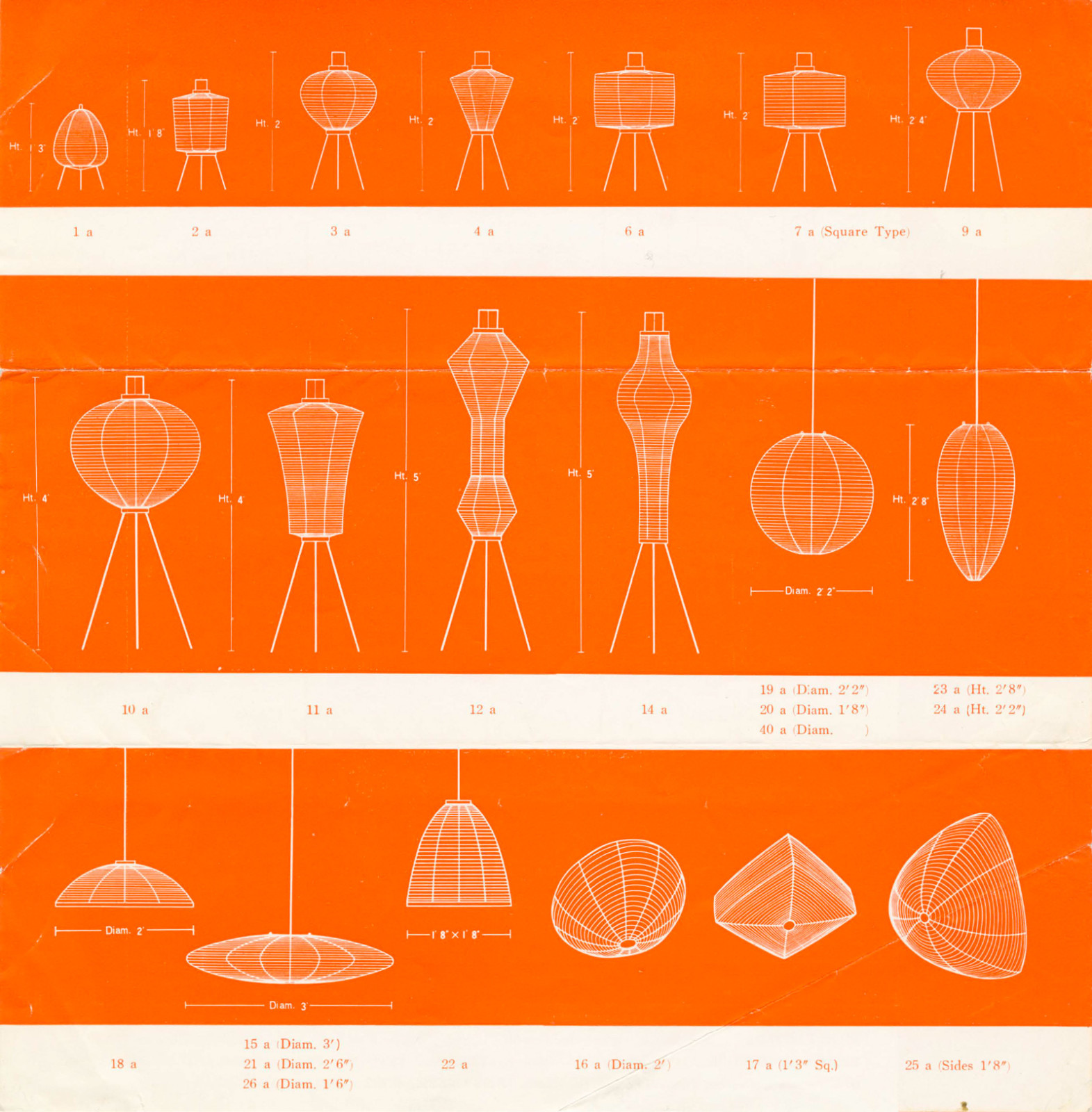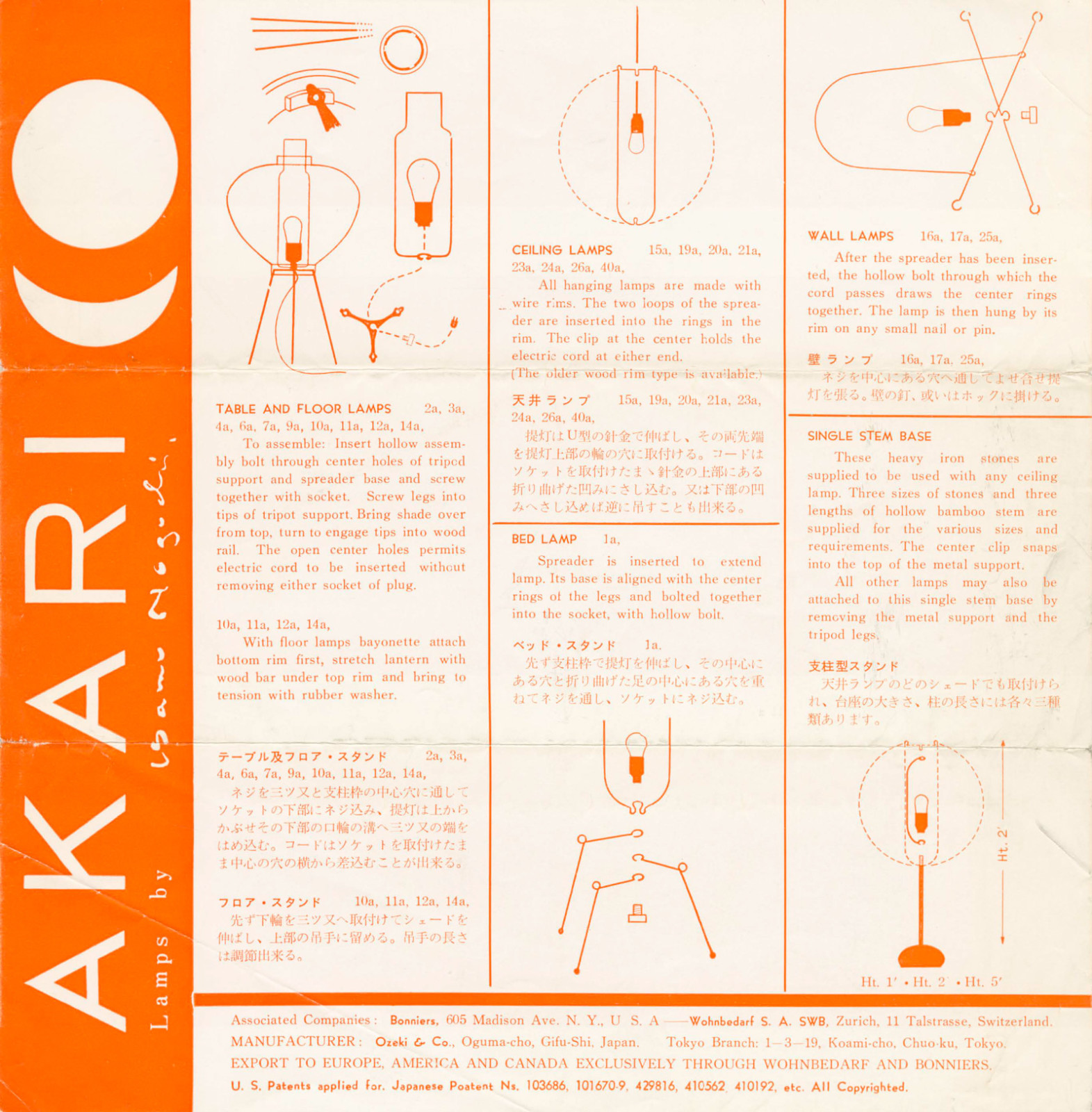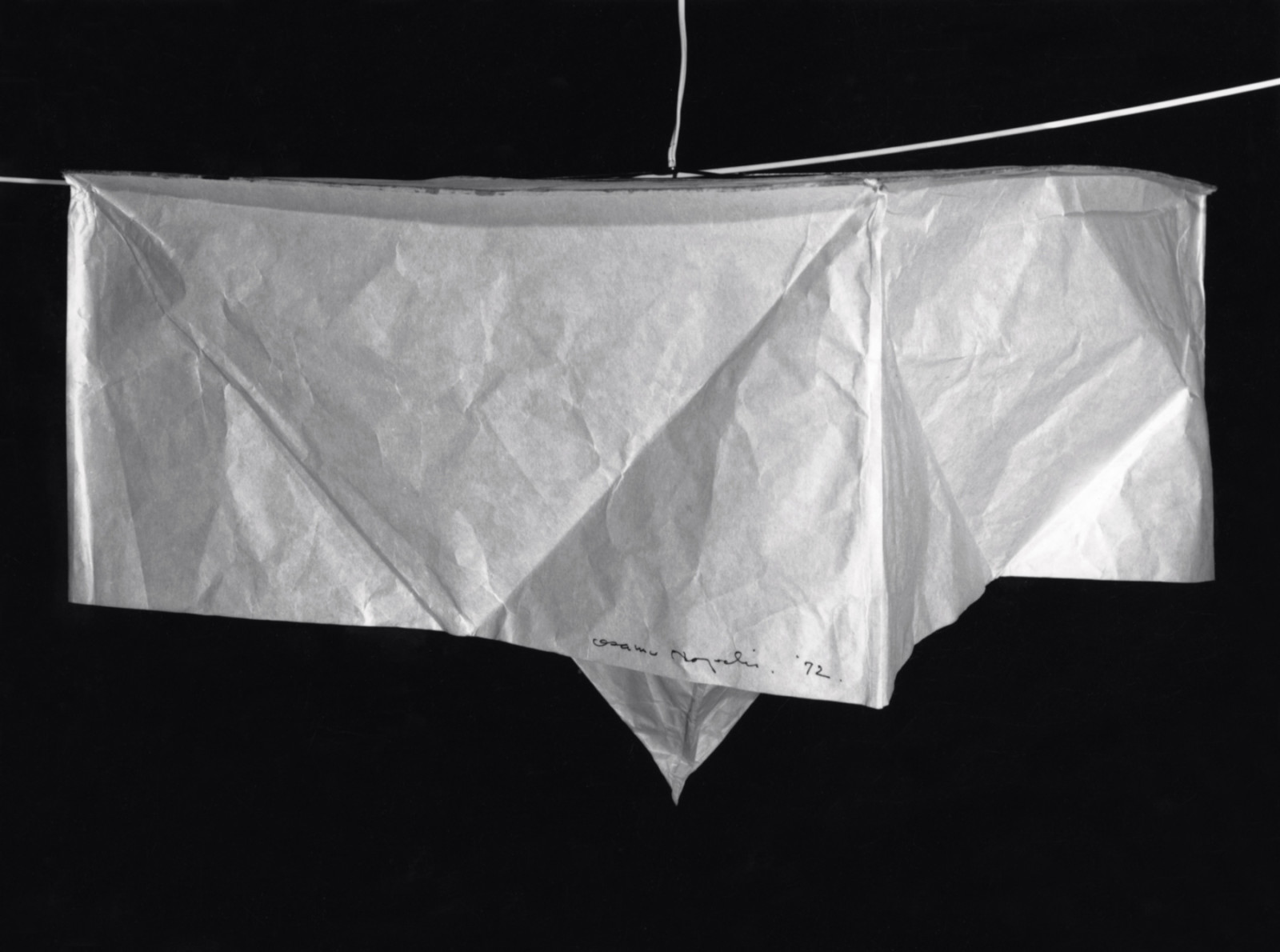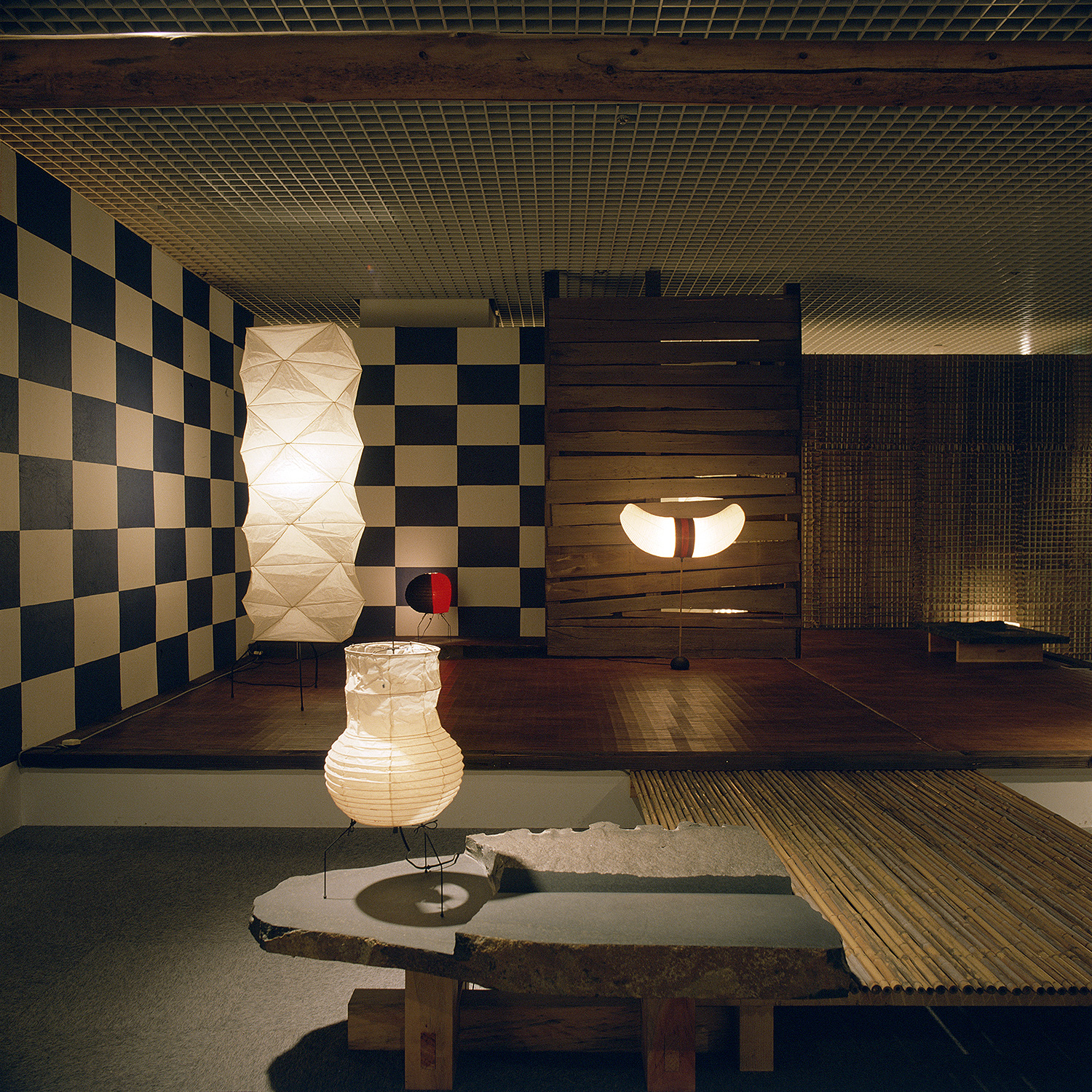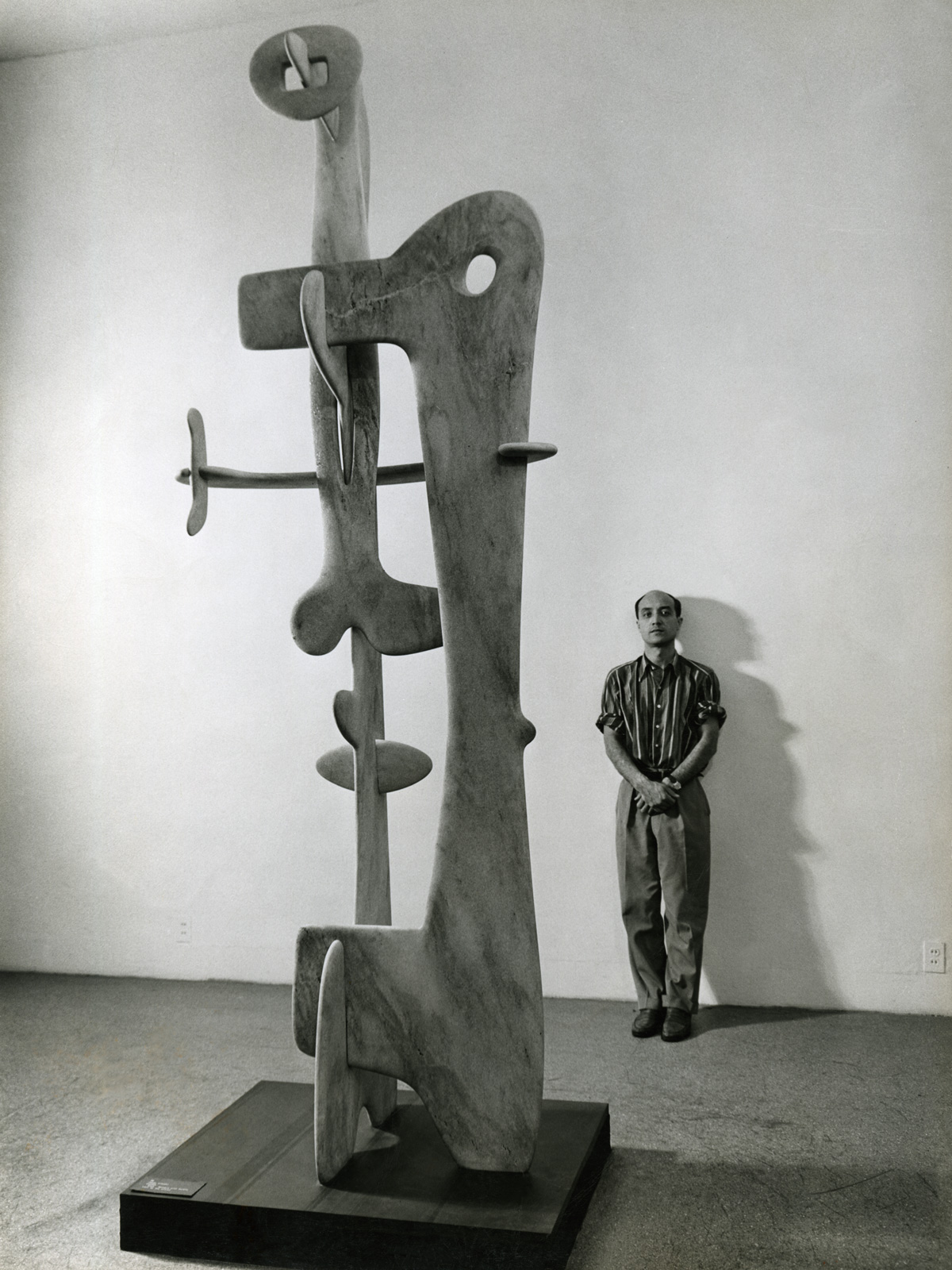Noguchi had made incremental steps toward light sculpture in the preceding decades. A prototype of an aural experiment for creating tones from wind, Musical Weathervane from 1933, was meant to glow when activated (although it’s uncertain that this was actually achieved). After working with variations of the material magnesite (an industrial plaster with enhanced density) in the late 1930s and early 1940s, Noguchi created larger interior environments with the medium for several commissions: ceiling landscapes for the Time Life information center at Rockefeller Center in New York, the lobby at the American Stove Company in St. Louis, and for Lunar Voyage, a stairwell wall in an ocean liner operating between New York and South America, the S.S. Argentina. For each he concealed colored light elements within hollows and channels, and used reflected light from exterior sources for raking light on their surfaces. He gave the catchall designation “Lunars” to these experiments and applied them to studio sculpture as well, of which a handful of objects survive. However, dissatisfied with the effects of reflected light, Noguchi would toy with more conventional means. He created a cylinder polyvinyl shade wound around three upright mahogany posts as a gift for his sister Ailes in the mid-1940s, which would serve as a prototype for a model put into production by Knoll Associates soon after.
